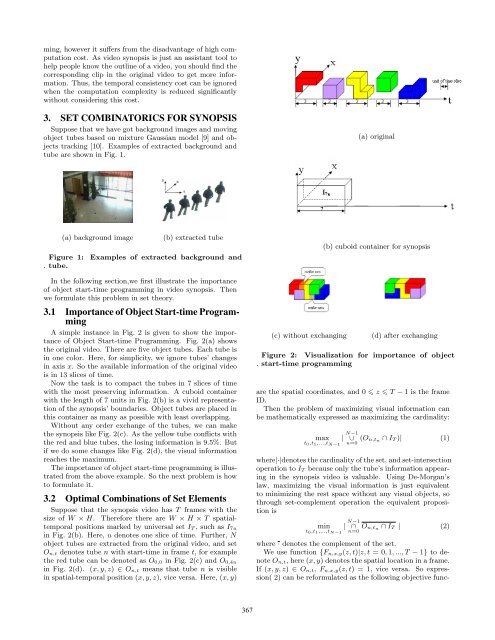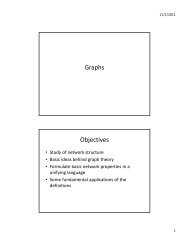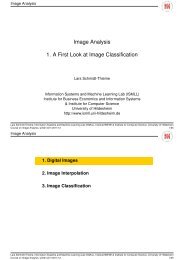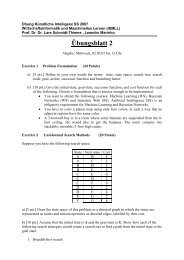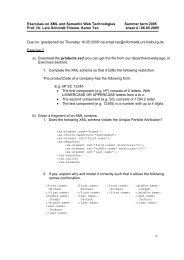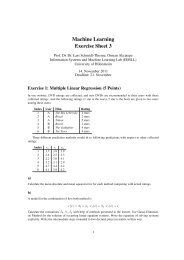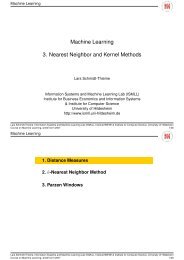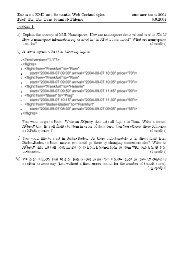A Set Theoretical Method for Video Synopsis - ACM Digital Library
A Set Theoretical Method for Video Synopsis - ACM Digital Library
A Set Theoretical Method for Video Synopsis - ACM Digital Library
You also want an ePaper? Increase the reach of your titles
YUMPU automatically turns print PDFs into web optimized ePapers that Google loves.
ming, however it suffers from the disadvantage of high computation<br />
cost. As video synopsis is just an assistant tool to<br />
help people know the outline of a video, you should find the<br />
corresponding clip in the original video to get more in<strong>for</strong>mation.<br />
Thus, the temporal consistency cost can be ignored<br />
when the computation complexity is reduced significantly<br />
without considering this cost.<br />
3. SET COMBINATORICS FOR SYNOPSIS<br />
Suppose that we have got background images and moving<br />
object tubes based on mixture Gaussian model [9] and objects<br />
tracking [10]. Examples of extracted background and<br />
tube are shown in Fig. 1.<br />
(a) original<br />
(a) background image<br />
Figure 1:<br />
. tube.<br />
(b) extracted tube<br />
Examples of extracted background and<br />
In the following section,we first illustrate the importance<br />
of object start-time programming in video synopsis. Then<br />
we <strong>for</strong>mulate this problem in set theory.<br />
3.1 Importance of Object Start-time Programming<br />
A simple instance in Fig. 2 is given to show the importance<br />
of Object Start-time Programming. Fig. 2(a) shows<br />
the original video. There are five object tubes. Each tube is<br />
in one color. Here, <strong>for</strong> simplicity, we ignore tubes’ changes<br />
in axis x. So the available in<strong>for</strong>mation of the original video<br />
is in 13 slices of time.<br />
Now the task is to compact the tubes in 7 slices of time<br />
with the most preserving in<strong>for</strong>mation. A cuboid container<br />
with the length of 7 units in Fig. 2(b) is a vivid representation<br />
of the synopsis’ boundaries. Object tubes are placed in<br />
this container as many as possible with least overlapping.<br />
Without any order exchange of the tubes, we can make<br />
the synopsis like Fig. 2(c). As the yellow tube conflicts with<br />
the red and blue tubes, the losing in<strong>for</strong>mation is 9.5%. But<br />
if we do some changes like Fig. 2(d), the visual in<strong>for</strong>mation<br />
reaches the maximum.<br />
The importance of object start-time programming is illustrated<br />
from the above example. So the next problem is how<br />
to <strong>for</strong>mulate it.<br />
3.2 Optimal Combinations of <strong>Set</strong> Elements<br />
Suppose that the synopsis video has T frames with the<br />
size of W × H. There<strong>for</strong>e there are W × H × T spatialtemporal<br />
positions marked by universal set I T , such as I 7u<br />
in Fig. 2(b). Here, u denotes one slice of time. Further, N<br />
object tubes are extracted from the original video, and set<br />
O n,t denotes tube n with start-time in frame t, <strong>for</strong> example<br />
the red tube can be denoted as O 0,0 in Fig. 2(c) and O 0,4u<br />
in Fig. 2(d). (x, y, z) ∈ O n,t means that tube n is visible<br />
in spatial-temporal position (x, y, z), vice versa. Here, (x, y)<br />
(c) without exchanging<br />
(b) cuboid container <strong>for</strong> synopsis<br />
(d) after exchanging<br />
Figure 2: Visualization <strong>for</strong> importance of object<br />
. start-time programming<br />
are the spatial coordinates, and 0 z T − 1 is the frame<br />
ID.<br />
Then the problem of maximizing visual in<strong>for</strong>mation can<br />
be mathematically expressed as maximizing the cardinality:<br />
max | N−1<br />
∪<br />
t 0 ,t 1 ,...,t N−1 n=0 (On,tn ∩ I T )| (1)<br />
where|·|denotes the cardinality of the set, and set-intersection<br />
operation to I T because only the tube’s in<strong>for</strong>mation appearing<br />
in the synopsis video is valuable. Using De-Morgan’s<br />
law, maximizing the visual in<strong>for</strong>mation is just equivalent<br />
to minimizing the rest space without any visual objects, so<br />
through set-complement operation the equivalent proposition<br />
is<br />
min | N−1<br />
∩<br />
t 0 ,t 1 ,...,t N−1 n=0 On,tn ∩ I T | (2)<br />
where · denotes the complement of the set.<br />
We use function {F n,x,y(z, t)|z, t = 0, 1, ..., T − 1} to denote<br />
O n,t, here (x, y) denotes the spatial location in a frame.<br />
If (x, y, z) ∈ O n,t, F n,x,y(z, t) = 1, vice versa. So expression(<br />
2) can be re<strong>for</strong>mulated as the following objective func-<br />
367


